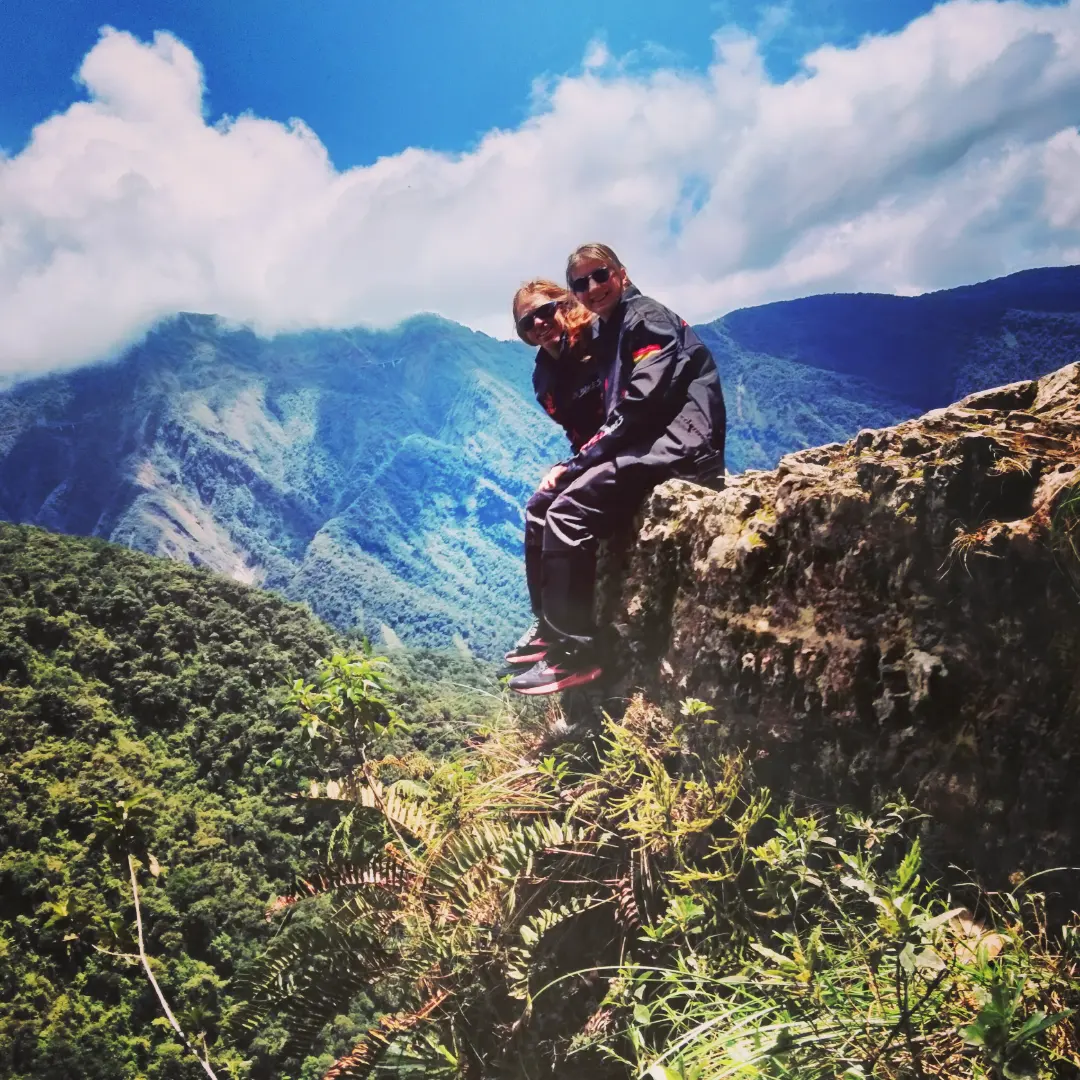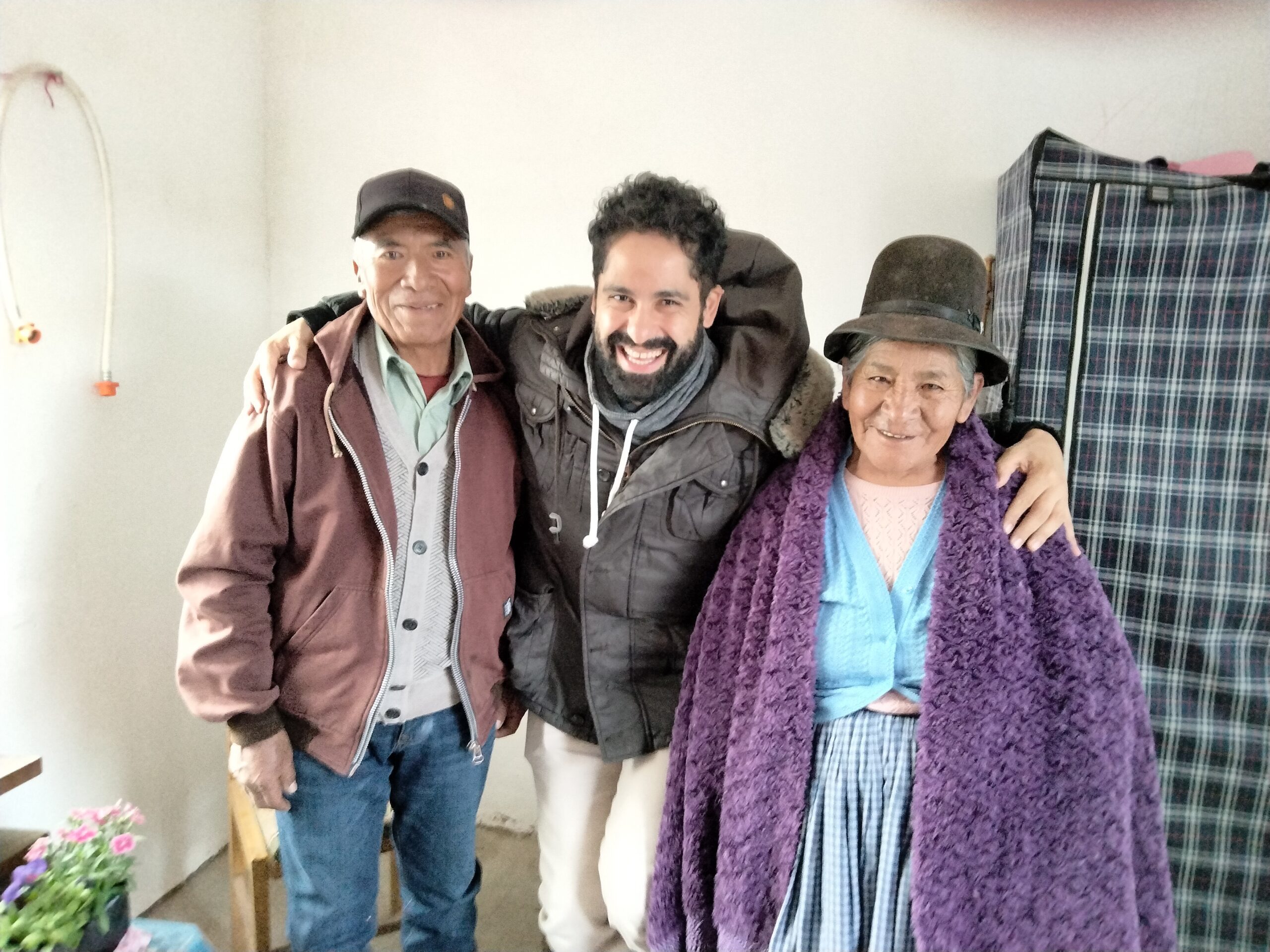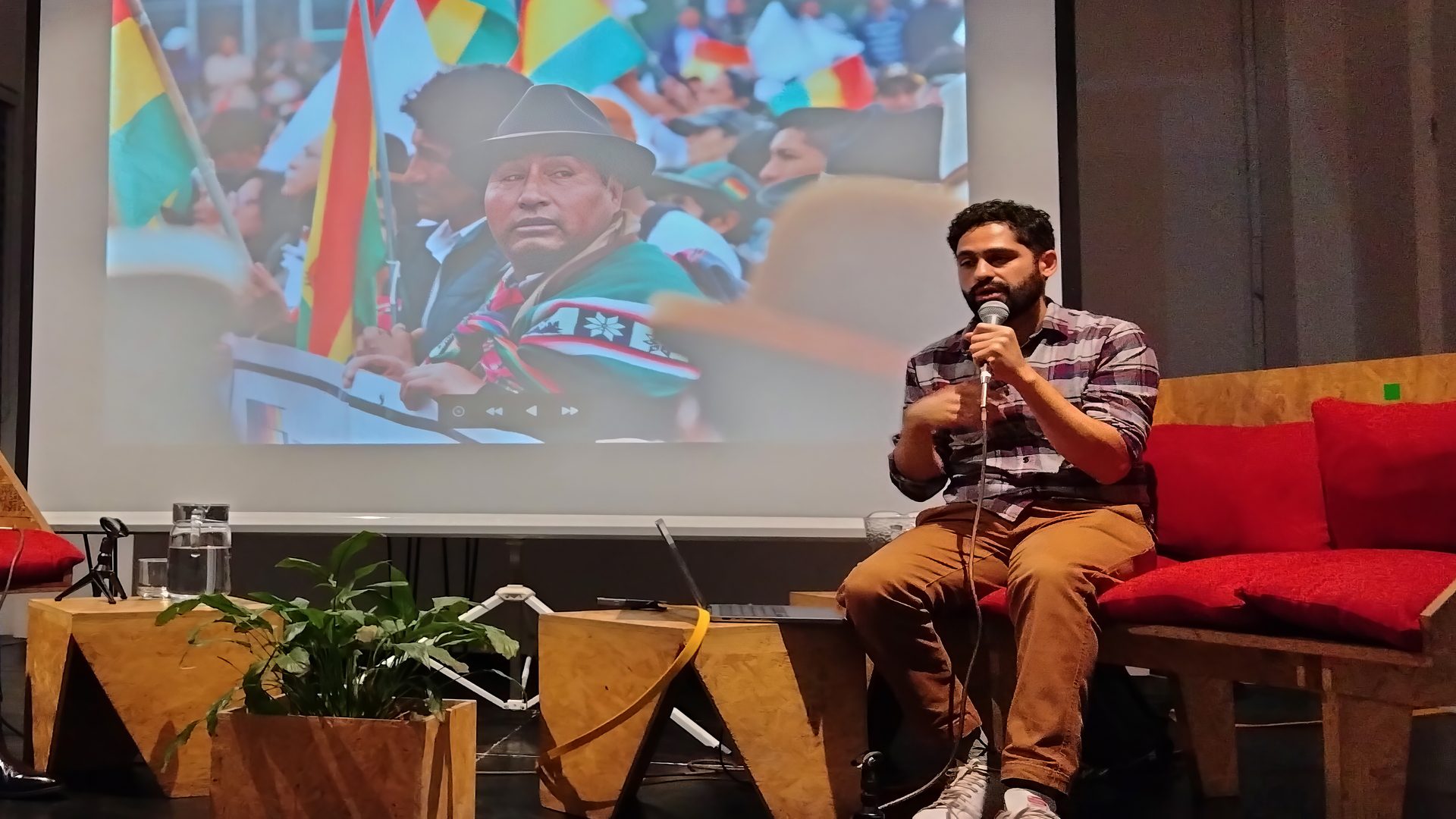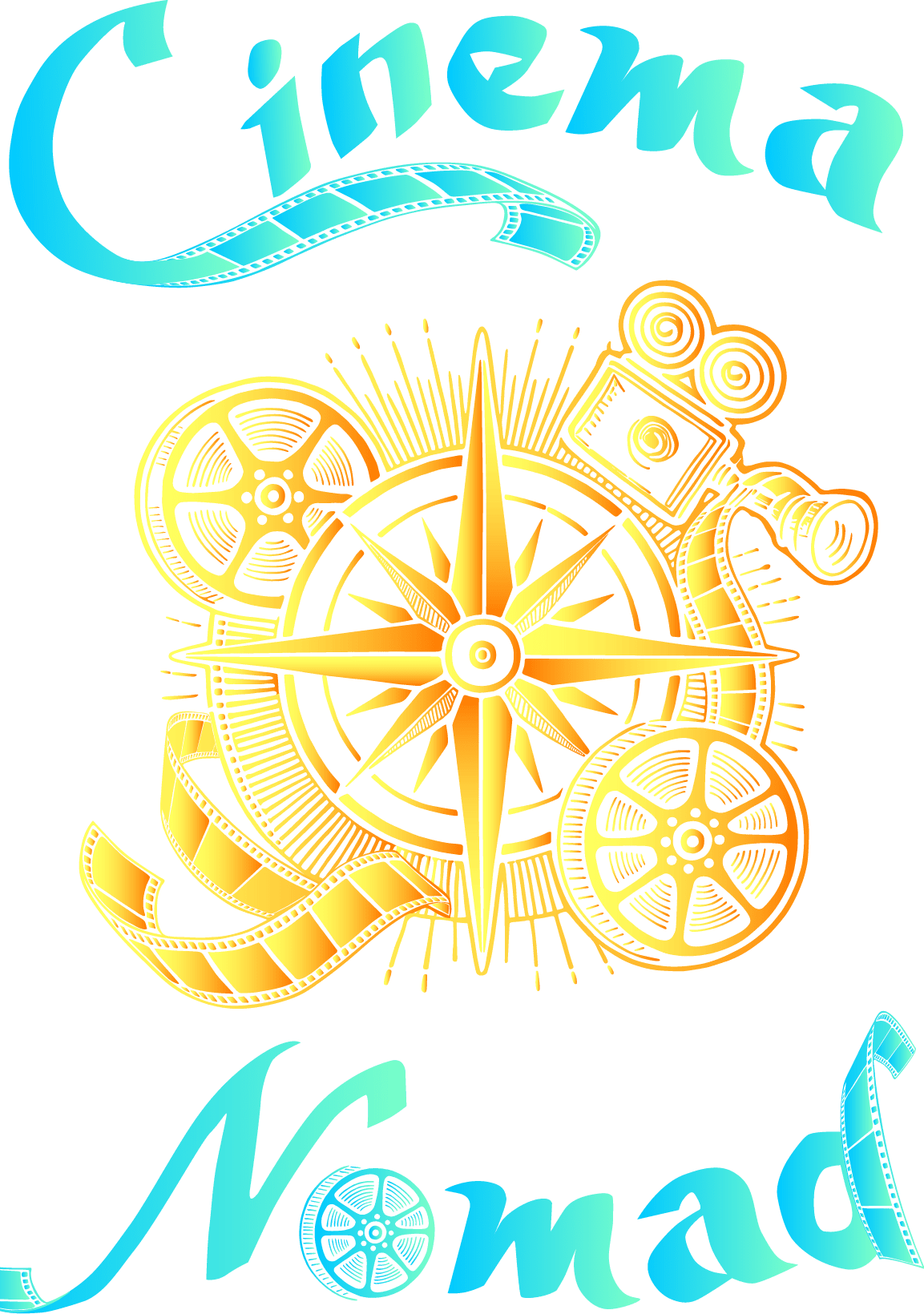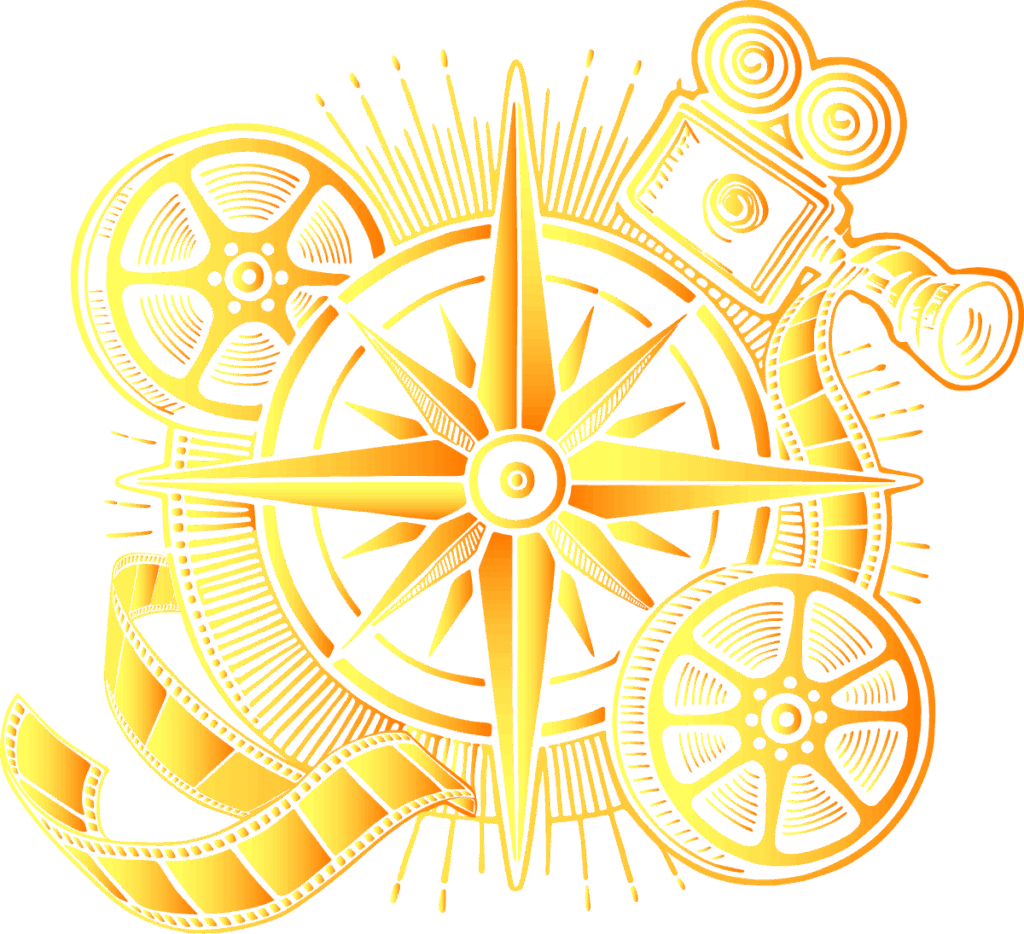
Bolivia
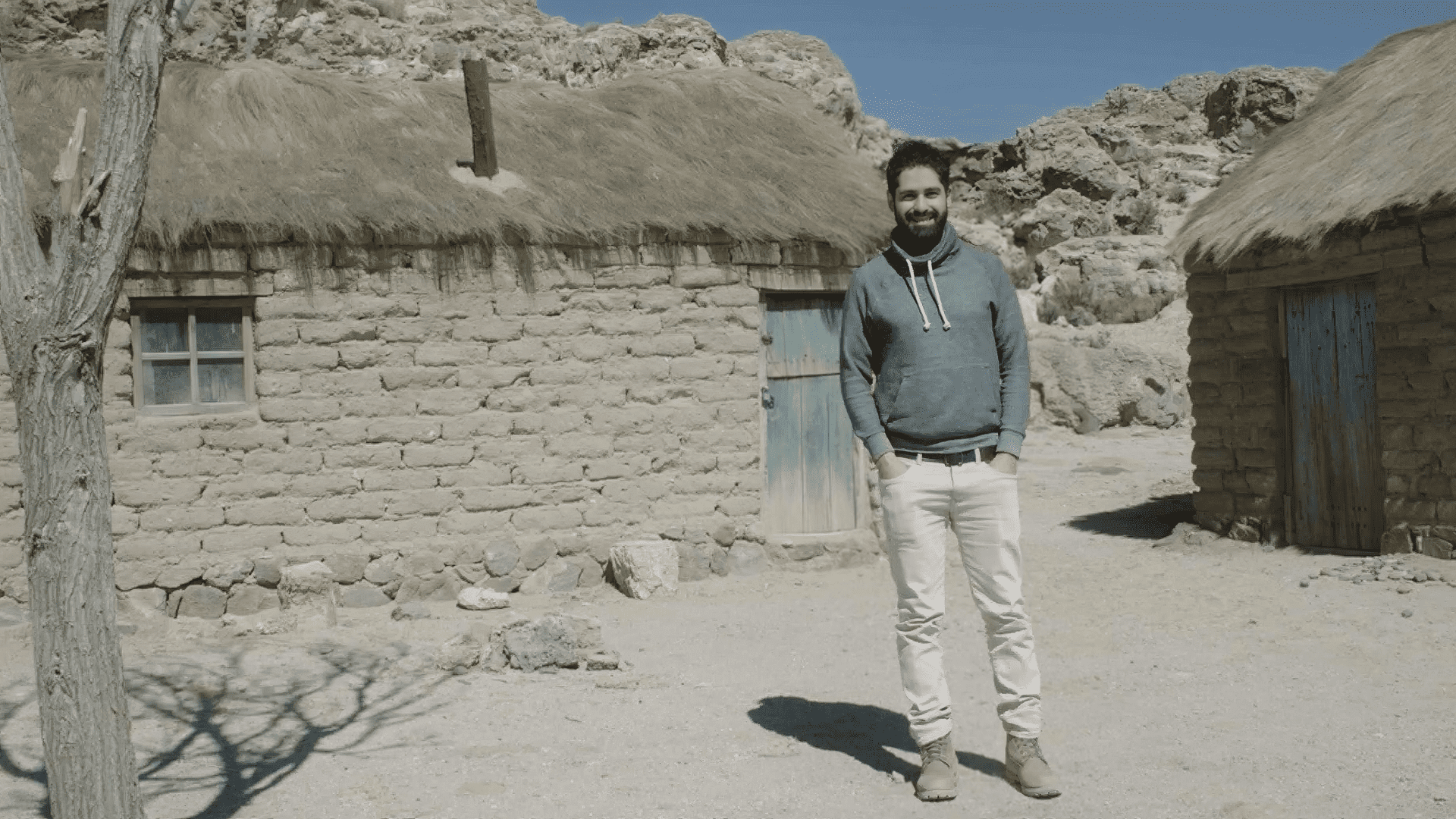
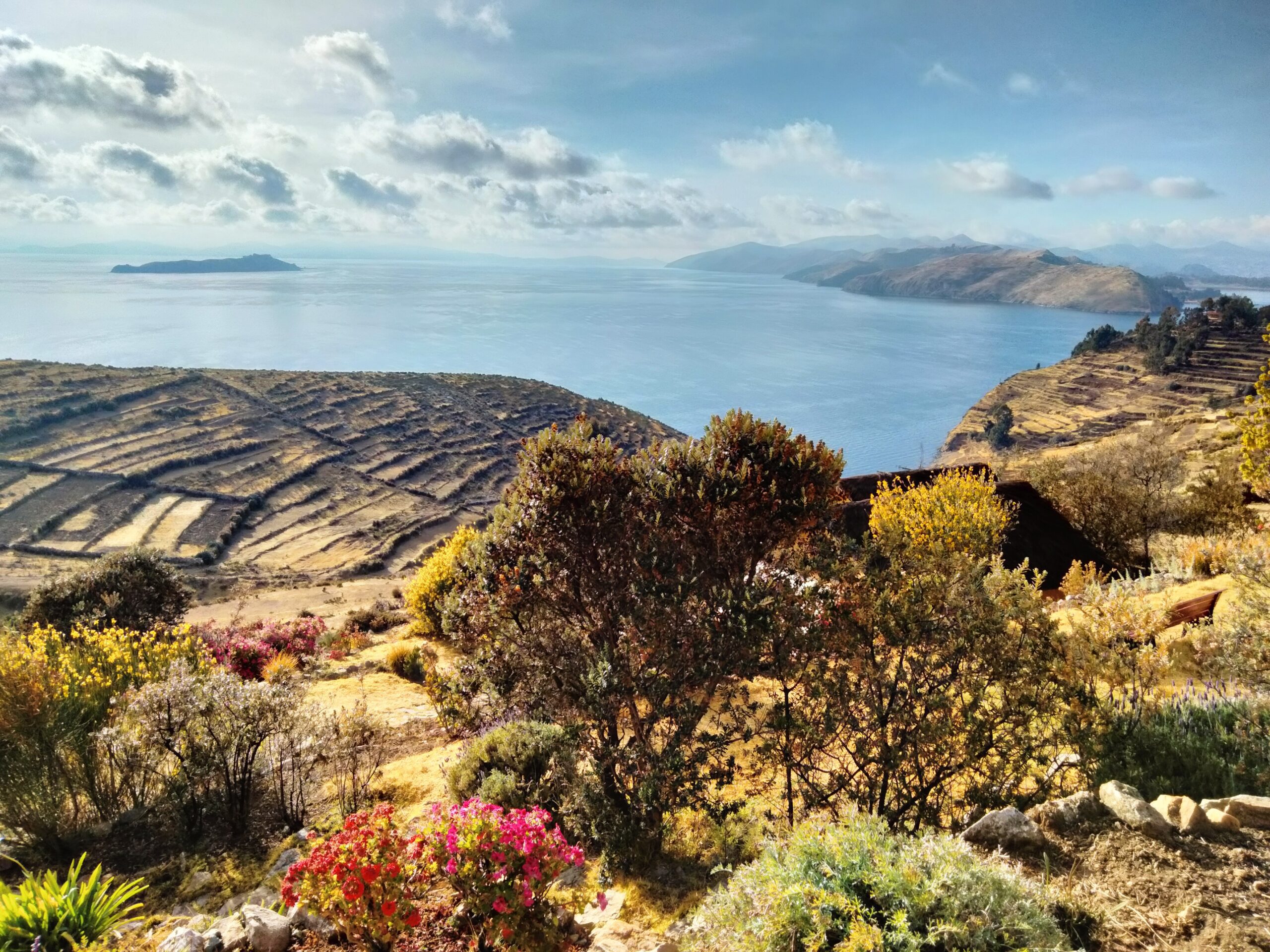
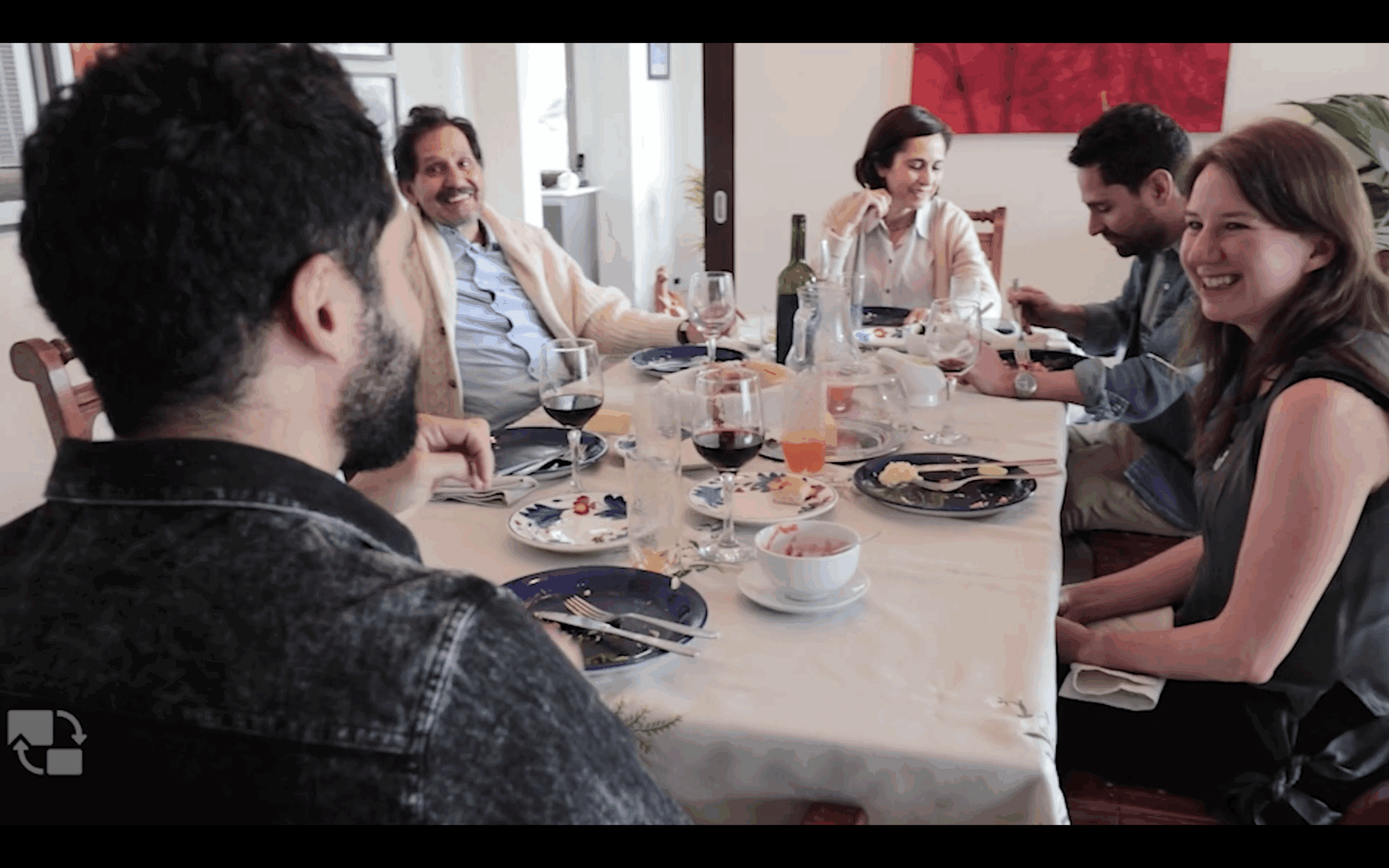
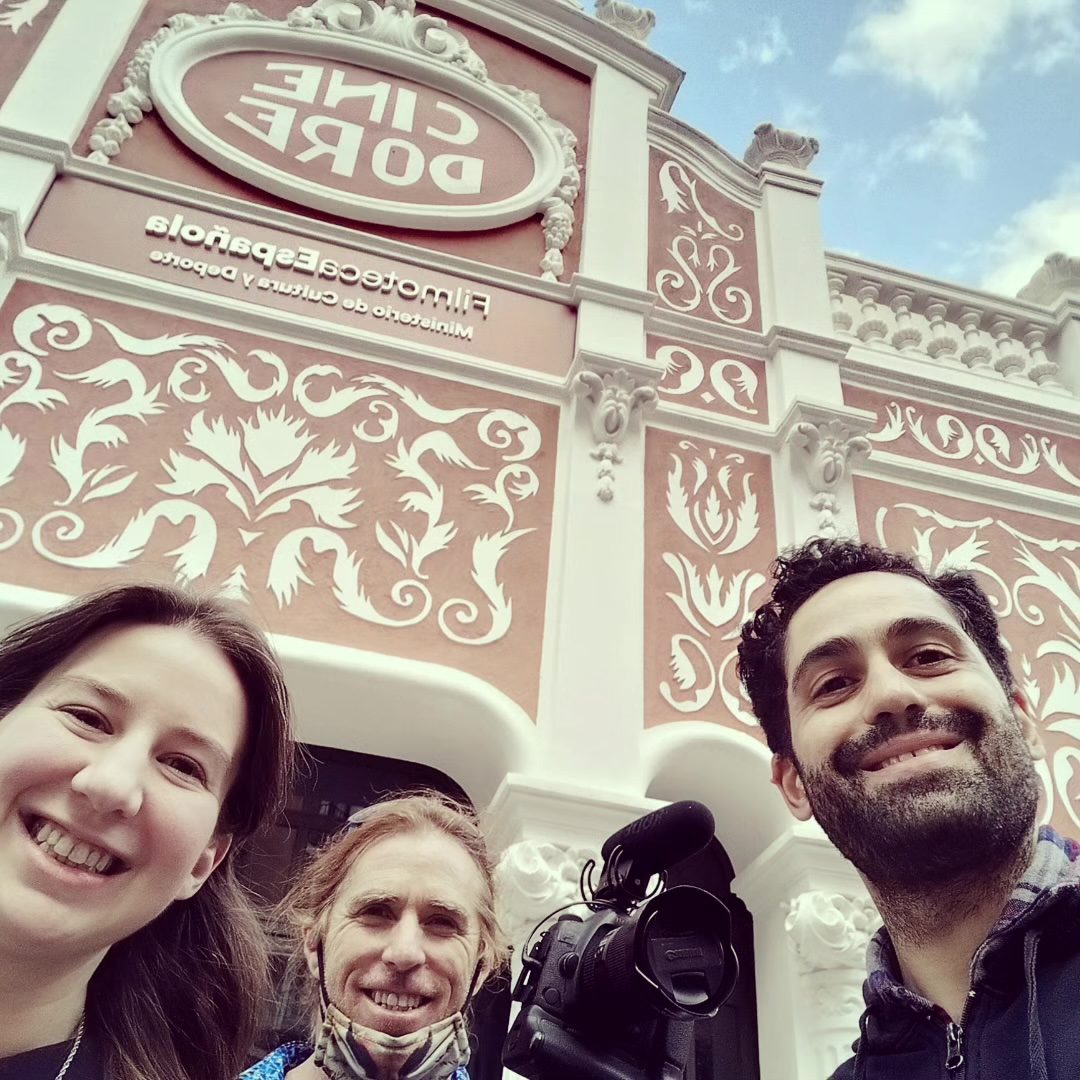
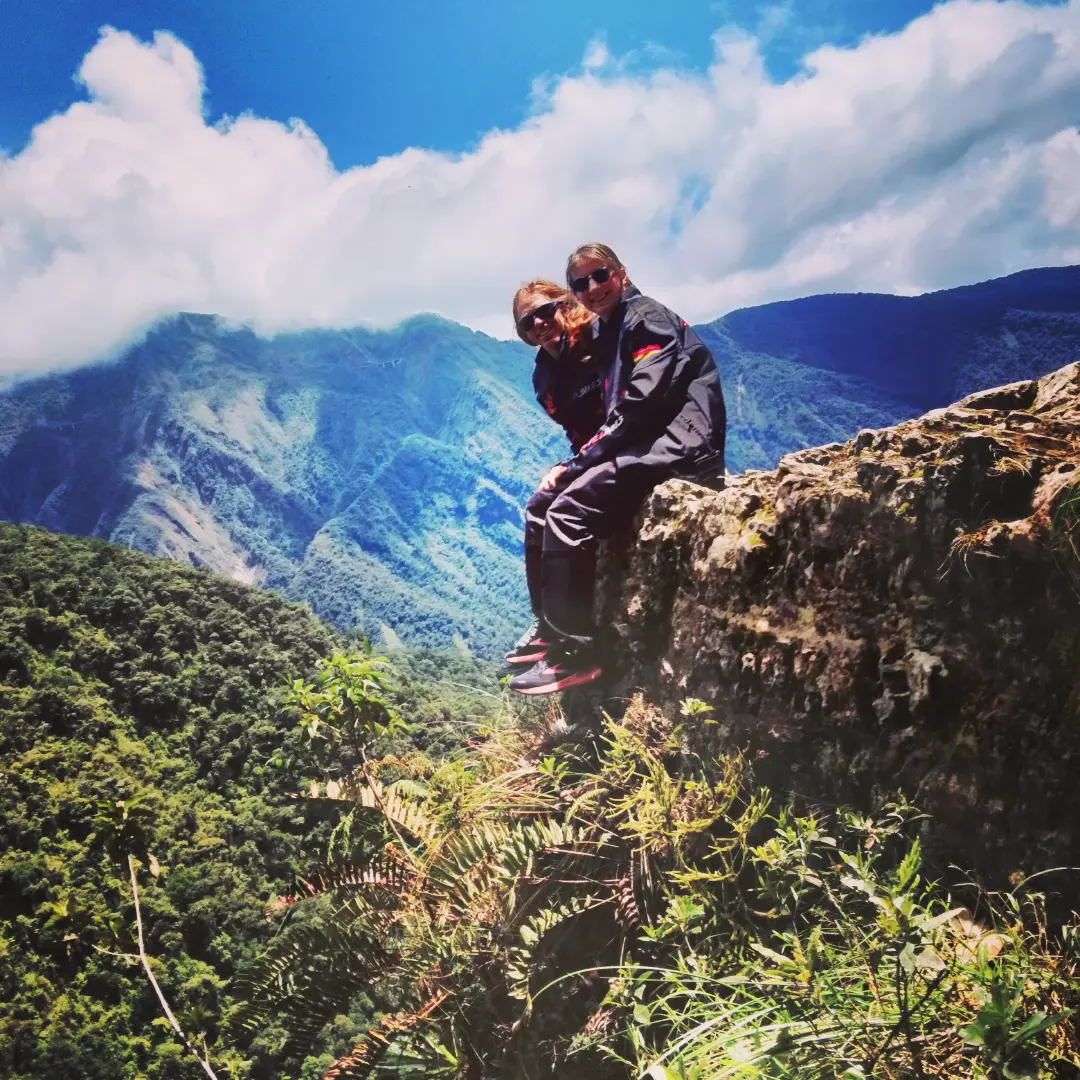
109: Bolivia
Journey to colorful La Paz, the highest capital city in the world, to meet Alejandro, photographer-turned-director, who hails from a filmmaking family. We travel across the world’s largest salt-flats to a Quechuan village, where Alejandro made his Sundance winning film, “Utama.” We attend film premieres, ceremonial dances, and explore the cultural landscape of Bolivia’s indigenous population.
Where Were You at 33?
Name: Alejandro Loayza Grisi
Place: La Paz, Bolivia
Age at Filming: 36
Personal logline: Alejandro is a Bolivian artist who struggles with indecision, money problems, and himself in order to keep making films and trying to have a “normal” life.
Directed by Alejandro: “Utama” (2022)
Alejandro’s “Desert Island” Films: “The Godfather” (1972) directed by Francis Ford Coppola, “You, The Living” (2007) directed by Roy Andersson, “Eternal Sunshine Of The Spotless Mind” (2004) directed by Michel Gandry, “Paris, Texas” (1984) directed by Wim Wenders, “Persona” (1966) directed by Ingmar Bergman
Alejandro’s “Guilty Pleasure” Film: “The Wedding Singer” (1998) directed by Frank Coraci
Alejandro’s 5 Films I Love About Love
Follow Alejandro: https://www.alejandroloayzagrisi.com/
Alejandro’s Instagram: @alejandro.loayza.grisi
“Utama” Instagram: @utama_pelicula
Alejandro’s Bio:
Alejandro is a Bolivian filmmaker born in La Paz in 1985. His debut feature “Utama” premiered at the Sundance Film Festival 2022 where it won the Grand Jury Prize in the World Dramatic Competition. “Utama” went on to win over 40 awards and numerous nominations in over 80 international festivals.
Alejandro began his artistic career in still photography, making exhibitions, numerous publications, and winning two national awards in Bolivia. Alejandro works as a Director of Photography, including for the documentary series “Planeta Bolivia,” and the music video album “Ningún Vals.” He is an Executive Producer at Alma Films, a production company he co-runs with his brothers and father, Marcus Loayza.
Attracted by the stories that can be told through the creation of images, Alejandro ventured into screenwriting and film directing, a field in which he currently works. He studied social communication and advertising, and earned a Master’s Degree in Screenwriting at the Complutense University of Madrid with The MediaPro Studio. He is the co-founder and co-organizer of the ISLAB screenwriting laboratory.
Reviews for “Utama” and Alejandro In The News:
https://www.rogerebert.com/reviews/utama-movie-review-2022
https://www.nytimes.com/2022/11/03/movies/utama-review-bolivia.html
https://www.indiewire.com/criticism/movies/utama-review-sundance-bolivian-film-1234692912/
https://variety.com/2022/film/reviews/utama-review-our-home-1235165876/
https://cine-vue.com/2022/11/interview-alejandro-loayza-grisi-dir-utama.html#google_vignette
Cinema of Bolivia
The early pioneers of Bolivian cinema include cameraman J. Goytisolo, Luis Castillo, and Luis Bazoberry.
In 1904, the “Portrait of Historic and Current Characters” is considered the first Bolivian-made movie, which included images of the country’s leaders.
Later, filmmaker Luis Castillo worked with anthropologist Arturo Posnasky. Together they created Condor Mayku Films, which produced “The Glory of the Race” in 1926. Posnasky had an interest in studying the culture of the Tiahuanaco and found filmmaking as a good way to showcase his findings.
“Aymara Heart” (1925), produced by José Maria Velasco Maidana’s production company, Urania Films, is considered the first scripted feature film, and “Wara Wara,” (1930) is Bolivia’s sole surviving silent film. Directed by Jose Maria Velasco, “Wara Wara,” Aymara for “stars,” tells the story of an indigenous Aymara community that’s massacred by Spanish conquistadors, forcing the few survivors to flee. After being rescued, the young princess, Wara, falls in love with a conquistador and their inter-ethnic romance ensues.
Luis Bazoberry’s 1936 “Green Inferno,” about the Chaco War, is considered the first sound film made by a Boliviano as well as “Indian Virgin” (1948) being the first sound film made in Bolivia, by Kenneth Wasson, a former U.S. cultural attache who was living in Bolivia and developed the film in his bathtub. It’s a 15 minute, black and white documentary about the Virgin of Copacabana.
As in many places around the globe, filmmaking in Bolivia declined as a result of WWII.
In the 1950s, parallel to the Cinema Novo movement of Brazil, and Argentina’s Third Cinema; Bolivia sought to create a new kind of cinema to help define its national identity.
For the decades to follow, Bolivian cinema was intertwined with the political consciousness of its filmmakers, and focused especially on showing the economic hardships within Bolivia’s indigenous communities.
Aesthetically, it was anti-Hollywood in “an attempt to create a genre of film made for the people by the people.” (The Art And Politics Of Bolivian Cinema by José Sánchez-H.) Films were made on location, with non-actors trying to represent a day-to-day reality through an often critical-political lens.
In 1952, the April Revolution occurred as a result of a military coup, which provoked a revolt by the miners who defeated the military with Victor Paz Estenssoro taking over. The miners’ victory culminated with the nationalization of the mines, major agrarian reform, and voting rights for all citizens.
The 1950’s and 1960’s were milestone years in the history of Bolivian cinema. This was a time in Bolivian history where the country was culturally celebrating its pre-Hispanic roots.
Influential filmmakers emerged, including Waldo Cerruto, Jorge Ruiz, Jorge Sanjines and Augusto Roca.
In 1953, Jorge Ruiz directed a documentary “Come Back Sebastian,” which was censored by the government, who tried to block it from screening at a festival in Uruguay seeing as it was a film that celebrated Bolivia’s indigenous cultures.
However, it was smuggled out of the country, allegedly by an ambassador, and awarded first place at the Uruguayan festival in the “ethnographic category.”
Also in 1953, the Instituto Cinematografica Boliviano (ICB) was created to promote the government of Victor Paz Estenssoro in the wake of the 1952 revolution. Through the ICB, the government had a monopoly on the film industry.
There’s a film in the vaults of Bolivian cinema, “The Courage Of The People,” made by one of the most important filmmakers in Bolivian history, Jorge Sanjines.
Born in 1936, Sanjines is credited by some for starting the Latin American New Wave of the 1960s and 1970s. His films are based on realism and social issues, forming a concept of “militant filmmaking,” the aesthetics and impetus of which is said to have inspired the more widely recognized revolutionary filmmaking of Cuba.
“The Courage Of The People” is strictly speaking a political film. It is a direct attack on the Bolivian politics of its day. The film was made in 1971, and delves into the situations of the indigenous mining communities.
The inhabitants are ancestors of those who were forced into the mita system, or forced labor, and were still working the mines and being exploited by the powers-that-be.
Even centuries after independence, the film depicts that there was still a Spanish-Colonial power-hold over the indigenous majority of Bolivian workers. In its most extreme metaphor, Bolivia has been described as a “South American apartheid.”
“The Courage Of The People” documents a cycle of government-approved miner massacres from 1942 through 1967.
What I learned after watching this movie is that there was a pattern in twentieth-century Bolivia to quell miners’ protests by sending in the army to massacre them, often ordered by the mine owner himself. These communities, mostly indigenous, were often far away from large populations.
In the 1960’s and 1970’s, Bolivian filmmakers started playing around with a lighter form of social realism and a more commercial style of filmmaking emerged; known as “Possible Cinema,” which focused more on portraitures of urban society.
In 1977, one of Alejandro’s favorite films, “Chuquiago,” was released, and became a hit at the Bolivian box office. “Chuquiago” was directed by Antonio Eguino, who has become a sort of mentor to Alejandro. Eguino went on to direct films such as “Bitter Sea” (1987), and “The Andes Don’t Believe In God” (2007).
“Chuquiago” is like a love-poem to the city of La Paz. “Chuquiago” is an Aymara name for La Paz. The film shows four distinct socio-economic classes of the city, which are still relevant today; including the ultra wealthy of Zona Sur, the southern part of the city. What makes Bolivia the opposite of some other cities, is that the higher up you get in the mountains, the poorer the population becomes. It’s a lovely film, entertaining too, which tells a lot about La Paz society, history, politics, social-strata, and economic woes.
The 1990s saw a rise in independent filmmaking by the likes of Juan Carlos Valdivia, known for “Jonah And The Pink Whale” (1995), and “American Visa” (2005); and Alejandros’ father, Marcos Loayza.
Born in La Paz in 1959, Marcos studied architecture at school and later attended film school in Cuba. He is most known for his movie, “A Matter of Faith” (1995), a road movie, which has become a classic of Bolivian cinema. Films since then include, “Ever Changing Waters” (1998); “The Heart of Jesus” (2003); and more recently, “Averno” (2018), which is almost like a Bolivian “After Hours” meets Dante’s Inferno.
Since 2010, over a dozen feature films have been produced each year and continue to question the realities of modern-day Bolivia. There is a “New Wave” of Bolivian filmmakers, and Bolivian movies are starting to get more international recognition; some successes include Kiro Russo’s second film, the “Gran Movimiento” (2021), which won a special Jury Prize at Venice.
“The Visitor” (2022), Martín Boulocq’s fourth feature film world premiered at Tribeca and explores the increasing presences of Evangelism in Latin America. “Tu Me Manques” (2019) directed by Rodrigo Bellott, was Bolivia’s submission to the 2021 Academy Awards. Alejandro Loayza Grisi’s “Utama” (2022) won the Grand Jury Prize for World Cinema at the 2022 Sundance Film Festival and became Bolivia’s Oscar submission in 2022. Juan Pablo Richter is another New Wave filmmaker to watch, known for “The River” (2018) and “98 Seconds Without Shadow” (2021) which premiered at the prestigious Tallinn Black Nights Film Festival in Estonia.
Suggested Reading:
“The Art And Politics Of Bolivian Cinema” by José Sánchez-H
Some Websites that discuss Bolivian Cinema:
https://www.cinematropical.com/cinema-tropical/foundations-of-resistance-in-bolivian-cinema
https://revista.drclas.harvard.edu/crash-course-on-bolivian-cinema/
https://www.factualamerica.com/global-lens/10-fascinating-documentaries-about-bolivia
https://www.cbatuk.org/bolivian-films
https://en.wikipedia.org/wiki/Cinema_of_Bolivia
https://www.cinematropical.com/cinema-tropical/bolivian-cinema-is-having-an-exceptional-year
https://hotcorn.com/en/movies/news/lets-take-look-south-american-cinema-bolivia/
https://www.ejumpcut.org/archive/jc54.2012/tibbits-cordova/text.html
Suggested Films From Bolivia
“Come Back, Sebastiana” (1953) Jorge Ruiz and Augusto Roca
“La vertiente” (1959) directed by Jorge Ruiz
“Blood of the Condor” (1969) directed by Jorge Sanjinés
“The Secret Nation” (1989) directed by Jorge Sanjinés
“Chuquiago” (1977) directed by Antonio Eguino
“Cuestión de Fe” (1995) directed by Marcos Loayza
“El Corazón de Jesús” (2003) directed by Marcos Loayza
“The Devil’s Miner” (2005) directed by Kief Davidson and Richard Ladkani
“The Andes Don’t Believe In God” (2007) directed by Antonio Eguino
“98 Seconds Without Shadow” (2021) directed by Juan Pablo Richter
“The Great Movement” (2021) directed by Kiro Russo
“The Visitor” (2022) directed by Martín Boulocq
“Utama” (2022) directed by Alejandro Loayza Grisi
Cinema Landmarks To Visit:
Cinemateca Boliviana
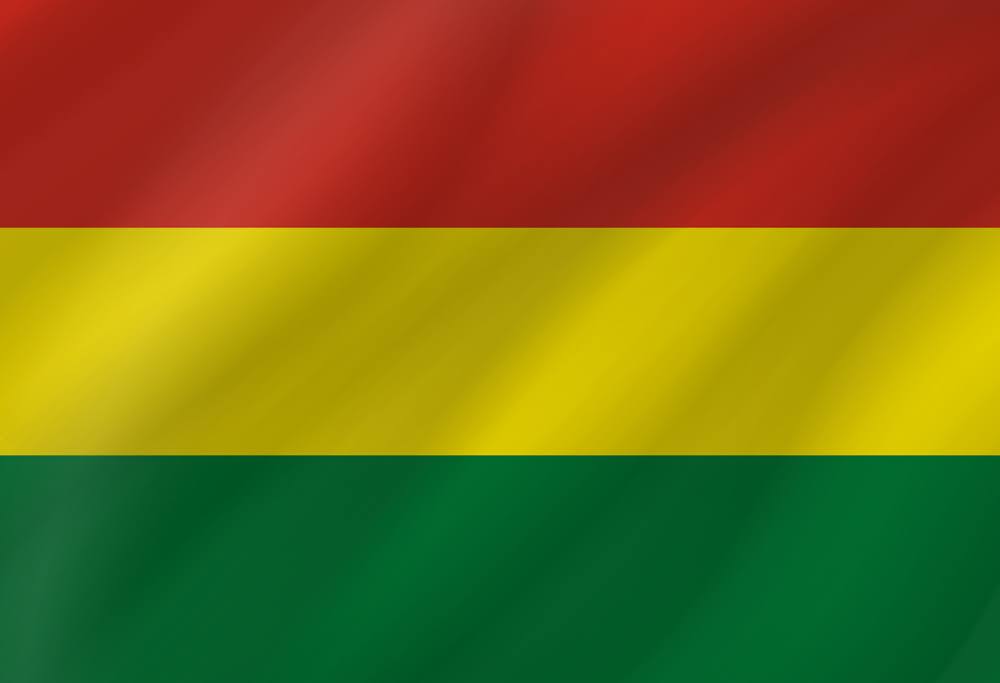
Official Name: Plurinational State of Bolivia
Population: 11 million
Capital City: La Paz (administrative), Sucre (constitutional)
Form of Government: Republic
Official Language:
Castilian (Spanish) and Araona, Aymara, Baure, Bésiro (Chiquitano), Canichana, Cavineño, Cayubaba, Chácobo, Chimán, Ese Ejja, Guaraní, Guarasu’we, Guarayu, Itonama, Joaquiniano, Kumsa, Leco, Machajuyai-Kallawaya, Machineri, Maropa, Mojeño-Ignaciano, Mojeño-Trinitario, Moré, Mosetén, Movima, Pacawara, Paunaka, Puquina, Quechua, Sirionó, Tacana, Tapieté, Toromona, Uru-Chipaya, Weenhayek, Yaminawa, Yuki, Yuracaré, Zamuco
Currency: Bolivian Boliviano
Borders: Brazil, Paraguay, Argentina, Chile, and Peru
About Bolivia
Located in the Central Andes mountains, bordered by Chile, Peru, Paraguay, and Brazil, Bolivia is a landlocked nation, having begrudgingly lost their coast to Chile in the late 1800s.
What land remains, however, is stunning. From the tropical Eastern Lowlands to the Western High Plateau, there are Amazon jungles, snow capped mountains, open cattle ranges, the world’s largest salt flats, and some exceptionally unique cities.
Bolivia is known to have the world’s highest everything! “Everything except for salaries,” joked our guide, Gonzalo. The world’s highest capital city [technically, administrative capital, not constitutional capital], the world’s highest lake, highest international airport, golf course, you name it.
Bolivia is one of the most bio-diverse countries on the planet: and new species are still being discovered. Climates can change from extreme cold to extreme heat to very wet in a matter of hours or miles.
Bolivia has the world’s largest deposits of lithium, along with plenty of natural gas and minerals.
And in Bolivia’s tenuous political history, the country has had over 100 revolutions. Still today, protests regularly shut down the roads.
Bolivia is one of the most bio-diverse countries on the planet: and new species are still being discovered. Climates can change from extreme cold to extreme heat to very wet in a matter of hours or miles.
With a population of just over 11 million, the country is said to have the largest indigenous population in South America, with the majority descended from the Quechua and Aymara peoples; though there are many other indigenous groups spread across the land, speaking at least 37 different languages.
Cinematically, Bolivia has paved the way for the Latin American anti-colonial cinema movements of the 1960’s and 1970’s, especially through the filmmaking of Jorge Sanjines and the “Ukamau Group.”
The earliest recorded civilization in Bolivia is traced to the Tiwanaku people, who settled on the Altiplano, dating back to around 500 CE. Many Aymara peoples consider themselves descendents of the Tiwanaku. I took a day trip to Tiwanaku, an ancient city named after the Tiwanaku people. Little is known about this pre-Incan civilization, though we know they constructed some pretty impressive structures, including giant monoliths, and a pyramid that once fully excavated, is predicted to be the second largest in the world. The Tiwanaku civilization collapsed around 1000 CE, and no one is really sure why.
The Incas conquered Bolivia in the 1400s, led by Pachacuti, and imposed the Quechua language in a predominantly Aymara speaking region.
From Encyclopedia Britannica:
In the centuries that followed the collapse of Tiwanaku, the Bolivian highland region maintained its dense populations with irrigation agriculture. By the 15th century the region was controlled largely by some 12 groups of Aymara-speaking Indians; they, in turn, fell under the control of the expanding Inca empire, which had its capital in Cuzco (now in Peru). Because the Aymara were the largest and most prominent non-Quechua-speaking group in the empire, they were allowed to retain their language and ethnic identity under Inca rule. However, large numbers of Quechua speakers were relocated to Aymara territories as part of a deliberate Incan policy of colonization. It was this early pattern of colonization and non-assimilation that gave Bolivia its current linguistic and ethnic makeup: Quechua and Aymara are still the two major Indian languages in Bolivia.
The Spanish Conquistadors arrived in Bolivia in the 1500s, led by Francisco Pizarro, who defeated the Inca. The Spanish forced the indigenous population to work under extremely harsh conditions in the mines to cultivate silver, exported to Europe, which funded the Spanish empire.
In the 1800s, the indigenous peoples attempted a rebellion, led by Túpac Amaru. This proved unsuccessful, but as the years went on, the people continued to find ways to fight back.
In 1825, Bolivia gained their independence and the country was named after South American revolutionary hero, Venezuelan born, Simón Bolivar.
Eventually, Bolivia’s mines got depleted, and from 1836-1839, Bolivia became part of a confederation with Peru under the presidency of Bolivian-born General Andrés de Santa Cruz. As a result of Santa Cruz’s greed, Bolivia ended up losing half of its territories over the years, to Brazil, Chile, and Paraguay, including its coastline. Generations of political upheaval ensued.
Bolivia has had over 100 revolutions and has gone through many, many different leaders. In 2005, Populist politician Evo Morales became the first indigenous president of Bolivia, and was popular for many years. He is a trade unionist and former cocalero activist. He remained in office until 2019, following disputed election results, he resigned.
About La Paz
Officially The City of Our Lady of Peace, La Paz was founded in 1548 by Captain Alonzo de Mendoza at present day Laja. The city was founded mostly because of gold, the plus being that it was on the trade route between Lima and Potosí, where the silver was. The Spanish conquistadors took over the gold mines, and Mendoza became the first mayor.
With a population just shy of 2 million inhabitants, and an elevation reaching 12,000 feet, I found La Paz to be one of the most unique cities I’ve ever been to: I absolutely loved it!
Especially unique is the fact that La Paz lies in a giant crater, or a “big bowl” as some locals described it to me. Parts of it are reminiscent of the U.S.’s South West; La Paz’s Valley of the Moon resembles Bryce Canyon in Utah.
The mountains are gorgeous, and I enjoyed the system of cable cars used for transportation: Mi Teleferico; a subway-system in the sky, providing panoramic views over the city with little risk of getting stuck underground, or delayed by the constant roadblocks set up by protestors throughout the city.
Not everyone loves Mi Teleferico, the world’s biggest urban cable-car network. The plus side is it allows people in the outskirts of the city easier access to transportation and thus potentially better economic situations. However, it’s been criticized for the exorbitant costs, upwards of $1billion spent to build it in one of South America’s poorest countries, and many question where that money went.
La Paz is a colorful city, made even more eclectic by the chalets of El Alto, “The New Andean Mansions,” designed by Aymara architect Freddy Mamani.
Three Things To Do in Bolivia
- Spend a few days on Lake Titicaca’s Isla del Sol to hike, immerse yourself in Aymara culture, and visit the Isla del Luna.
- Visit Salar de Uyuni, the world’s largest salt flats; and neighboring Quechuan villages.
Rent a car and explore the Chiquitanas at as leisurely a pace as your time will allow.
Stephanie’s Top 3 Travel Tips to Visit Bolivia
- Snack on Salteñas
- Get an overhead view of La Paz by traveling on Mi Teleferico
Shop for custom-made leather jackets
Suggested Reading:
“Whispering in the Giant’s Ear: A Frontline Chronicle from Bolivia’s War on Globalization” by William D. Powers
Useful Links:
- Mr History’s A Super Quick History Of Bolivia
- Lonely Planet
- Britannica
- National Geographic
- https://kids.nationalgeographic.com/geography/countries/article/bolivia
- https://www.nationalgeographic.com/travel/destination/bolivia
- https://www.nationalgeographic.com/travel/article/ancient-island-hidden-lake-titicaca
- https://www.nationalgeographic.com/travel/article/el-alto-freddy-mamani-architecture
- Atlas Obscura
- CIA World Factbook
- BBC Country Profile
- WikiVoyage
- 28 Essential Things To Know Before Traveling In Bolivia
- On The Trail Of Che In Bolivia
- Along Dusty Roads
